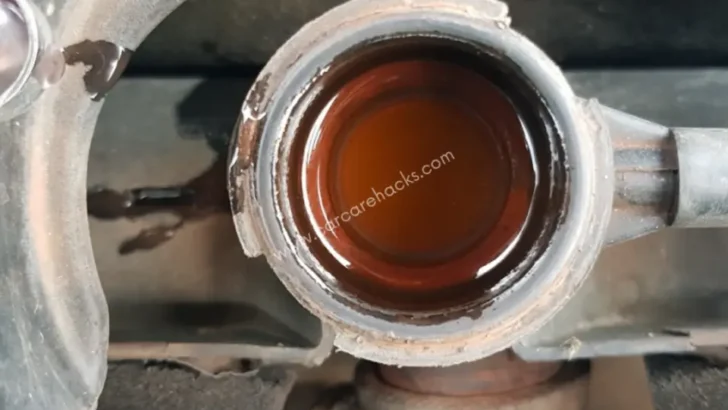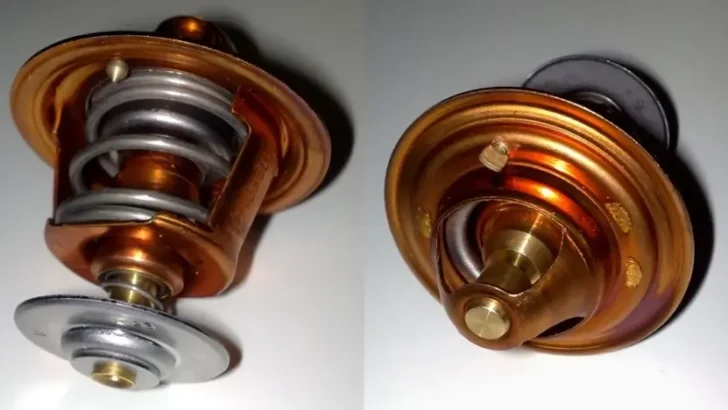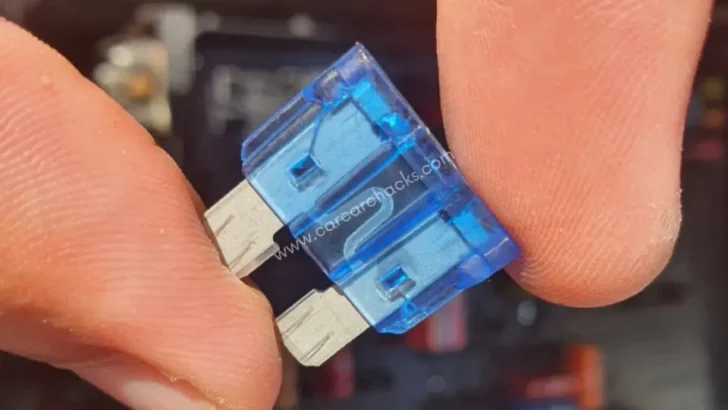When your car stops blowing heat, the last thing you want to do is spend a lot of time and money trying to fix it. Not all repairs require a lot of time and money.
Having heat in your vehicle is not just for comfort. You need heat to defrost the windshield in the winter. So, if you are looking to fix the heat in the car real quick, here is how to do it.
Key Takeaway
- A quick fix for no heat in a car may involve checking the coolant level, thermostat, and heater control valve, and ensuring proper airflow to quickly produce hot air.
- A bad car thermostat can cause the heat not to work properly as it can prevent the coolant from circulating properly and reduce the amount of heat transferred to the heater unit.
- To determine if a car thermostat needs to be replaced, one should look out for symptoms such as strange sounds, erratic temperature changes, coolant leaks, overheating, incorrect readings on the temperature gauge, and vehicle noises.
How Does a Car Heater Work?
A car heater works by utilizing the engine’s coolant system to produce heat.
Hot coolant from the engine flows through the heater core, which is essentially a small radiator located inside the vehicle.
The blower fan then blows air over the heated heater core, warming it up.
This warm air is then directed into the cabin through the vents, providing heat to the passengers.
Quick Fix For No Heat In Car

To perform a quick fix in a car with no heat you need to check the coolant level and add coolant if needed. Then, check the thermostat and replace it if it’s not working properly. If you still have no heat, you should verify that the heater control valve is working properly and that the heater fuse is not blown.
1. Check the coolant level

Coolant extracts heat from the engine and transfers it to the heater core that acts as a heat exchanger and this is how you get heat in the car. Because the heater core sits higher than the radiator, if there is not enough coolant in the radiator, the heater core will not get any coolant and you will have no heat in the car.
The heater core is essentially a small radiator that circulates the hot coolant from the engine through narrow tubes. This coolant passes through a finned chamber that acts as a heat exchanger. It transfers the engine heat to surrounding air that is then blown into the passenger area via vents to warm it up.
The heater core is directly connected to the vehicle’s cooling system. So, when the engine is running and heated coolant has been circulated, warm air will be distributed throughout the cabin.
To check the coolant level, open the radiator cap and check the level of your coolant. If you are low on coolant, adding more coolant to your radiator will fix the no-heat problem.
Is there any gunk in the radiator? See how to flush your cooling system.
2. Check your thermostat

If your vehicle is unable to reach the proper operating temperature, the thermostat is stuck open. The cooling system is a closed pressurized system. Once the coolant reaches the needed temperature, it is up to the thermostat to open and let the coolant circulate through the cooling system.
If your thermostat is stuck in an open position, the coolant will circulate all the time and it won’t be able to get hot. To check the thermostat, follow the main radiator hose that goes into the engine. There are usually two bolts, one on each side. Remove the bolts and install a new thermostat.
Replacing a faulty thermostat will allow your engine to reach the proper operating temperature and you will have heat in your cabin.
3. Check the heater control valve
A very common reason why your vehicle has no heat is that the heater control valve is not working properly. The heater control valve could be operated by vacuum, cable, or electronic. In all cases, the heater control valve should open and close in synchronization when you switch the heating controls inside your cabin.

If the heater control valve is faulty, it will not open and let the hot coolant run through the heater core hoses and you will not have heat in your cabin. In this case, you will have to replace your faulty heater control valve to get heat in your car.
The heater control valve is located on top of the two heater core hoses on the backside of the engine. You can check if this valve is operational by adjusting the heater from the panel inside your cabin and see if the heater control valve moves (opens and closes).
4. Check if the heater fuse is blown

The car’s heater is equipped with a fuse that safeguards the entire system from electrical overload. If the heater fuse is blown, you will have no heat in the car.
Replacing a blown fuse will fix your heat problem. To check for a blown fuse, open the hood and locate the fuse box. On the inside of the fuse box cover, you will see information on where exactly to find the heater fuse.
Once you’ve located the heater fuse, pull it out. Check the metal strip that connects the two pins in the fuse. If the metal strip is broken, you will need to replace the fuse and that will fix your no-heat problem.
Can a Bad Car Thermostat Cause Heat Not To Work?
Yes, a bad car thermostat can cause the heat not to work properly.
The thermostat is responsible for regulating the engine’s temperature and controlling the flow of coolant.
If the thermostat is stuck closed or not functioning correctly, it can prevent the coolant from circulating properly. This leads to insufficient heat being generated in the engine.
As a result, the heater may blow cold air or only provide lukewarm air instead of hot air.
In such cases, replacing the faulty thermostat can help restore proper heat functionality in the vehicle.
How Do I Know If My Car Thermostat Needs To Be Replaced?
If your engine is constantly struggling to reach the optimal operating temperature, it means that the thermostat is stuck in an open position and has to be replaced. When the thermostat is in the open position, it constantly allows coolant to circulate and the engine isn’t able to heat up enough.
A thermostat in a car keeps the engine at an optimal temperature to ensure it runs efficiently. It does this by regulating how much coolant flows through the radiator and engine. This way it keeps the engine from getting too hot or too cold.
The thermostat is also responsible for preventing overheating by allowing coolant to flow when the engine gets hot, before switching back to circulation mode when the desired temperature is reached.
On the other hand, if the engine temperature is constantly higher than normal, it means that the thermostat is stuck in a closed position and isn’t allowing the hot coolant to get away from the engine. In this scenario, it is best if you replace the thermostat to prevent engine overheating.
The lifespan of a car thermostat varies depending on the make, model, and type of your car. It’s important to replace it at its recommended life cycle. Failure to do so can lead to serious engine damage. Fortunately, most car owners can expect their thermostat last from five to seven years on average with proper maintenance.
FAQs
Q: Why is my car heater blowing cold air?
A: There could be several reasons why your car heater is blowing cold air. It could be due to a low coolant level, a malfunctioning thermostat, a clogged heater core, or a faulty heater control valve.
Q: How do I fix a car heater that is not working?
A: To fix a car heater that is not working, you can start by checking the coolant level. You can also check for any leaks in the cooling system. If the coolant level is fine and there are no leaks, there may be a problem with the thermostat or the heater core, which may require professional repair.
Q: Why is my car heater not blowing?
A: If your car heater is not blowing any air, it could be due to a faulty blower motor or a problem with the blower motor resistor. It could also be a problem with the fuse or relay that controls the blower motor. Additionally, there may be a blockage in the air ducts or a problem with the HVAC control module.
Q: How can I fix a car heater that is blowing out cold air?
A: One common cause for a car heater blowing out cold air is a clogged heater core. This can be fixed by flushing the coolant system to remove any debris or sediment that may be blocking the heater core. If flushing the system does not resolve the issue, there may be a problem with the blend door or the heater control valve, which may require professional repair.
Q: What could be the reasons why my car heater stopped working?
A: There are several possible reasons why your car heater may have stopped working. It could be due to a low coolant level, a malfunctioning thermostat, a faulty heater control valve, a clogged heater core, or a problem with the blower motor. It is best to have a professional diagnose and resolve the issue.
Q: What is a quick fix for no heat in a car?
A quick fix for no heat in a car can be checking the coolant level and adding coolant if necessary. It is also important to check the thermostat and ensure it is functioning properly. If these actions do not restore heat, it is advisable to seek professional assistance to diagnose and fix the problem.
Q: Why is my car heater not blowing hot air?
If your car heater is not blowing hot air, it could be due to a problem with the heater core. The heater core may be clogged or malfunctioning, preventing hot air from circulating. It is recommended to have a professional inspect and repair the heater core, if necessary.
Q: How can I fix a car heater that is not working properly?
A: To fix a car heater that is not working properly, you can start by checking the coolant level. Ensure it is at the proper level. You can also check for any leaks in the cooling system. If the coolant level is fine and there are no leaks, there may be a problem with the thermostat or the heater core. This may require professional repair.
Q: What are some common car heater problems?
A: Common car heater problems include a car heater blowing cold air, a car heater not blowing any air, a car heater not blowing hot air, and a car heater not working at all. These issues can be caused by various factors such as low coolant levels, a malfunctioning thermostat, a faulty blower motor, or a clogged heater core.
Q: Why is my car heater not blowing any air?
A: If your car heater is not blowing any air, it could be due to a faulty blower motor or a problem with the blower motor resistor. It could also be a problem with the fuse or relay that controls the blower motor. Additionally, there may be a blockage in the air ducts or a problem with the HVAC control module.
In Conclusion
Common steps to quickly fix a car with no heat include checking the coolant level, inspecting the thermostat, examining the heater control valve, and ensuring proper airflow to the heater core.
